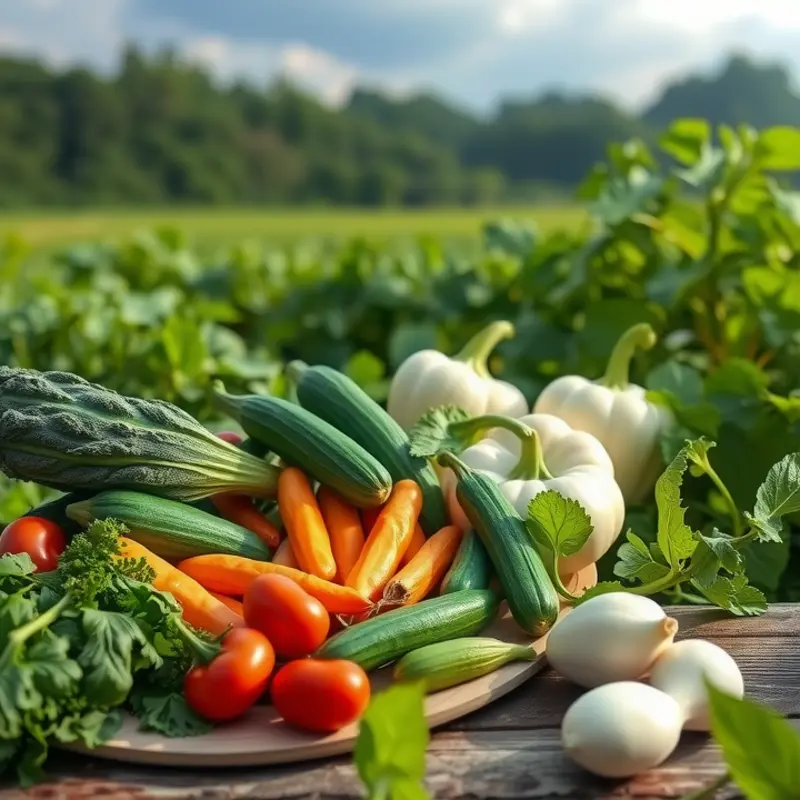Cooking vegetables without oil can be an exciting way to enhance flavors while maintaining a healthy diet. By using various techniques, home cooks of all skill levels can prepare vibrant, delicious veggie dishes that retain their natural goodness. Whether you’re aiming for a lighter meal or simply want to experiment in the kitchen, these practical tips will guide you to achieve remarkable results while omitting oil from your cooking. Let’s explore methods to make your vegetable dishes shine!
Steaming: The Secret to Vibrant Veggies

Steaming is a simple, yet effective method to cook vegetables without oil. It preserves the natural flavors and nutrients of veggies, ensuring they remain vibrant and crunchy. To start, choosing the right steaming equipment is essential. A traditional bamboo steamer, metal steamer basket, or an electric steamer can all work well. Consider the volume of vegetables you’re preparing and your kitchen setup when selecting the tool.
Begin by preparing your vegetables. Cut them into uniform pieces to ensure even cooking. Dense veggies like carrots and potatoes should be sliced thinner than softer vegetables such as broccoli or asparagus. Arrange them in a single layer without overcrowding. Overcrowding can lead to uneven cooking as steam might not circulate properly.
Timing is key to perfectly steamed vegetables. Each type of vegetable requires a different steaming duration. For instance, asparagus spears typically need about 3-5 minutes, while denser vegetables like potatoes may require 20 minutes or more. To prevent overcooking, it’s crucial to keep a close eye during the process and adjust times based on your personal texture preference.
Water is the next consideration in the steaming equation. Use about 1-2 inches of water. It’s important that the water level doesn’t touch the vegetables but is still enough to produce adequate steam for cooking. Bringing water to a gentle boil before placing vegetables in the steamer helps in cooking them quickly and evenly.
Flavor boosting during steaming is also possible without oil. Consider adding herbs and spices directly to the water. Ingredients like garlic, ginger, or lemon can infuse the steam, transferring their flavors to the vegetables. This method enhances the taste profile while keeping the calorie count in check.
For those wary of food waste, steaming is a fantastic choice. It requires minimal preparation and virtually no fat, meaning any leftover water can be reused. Check out tips on low-waste cooking and preparation here.
Post-steaming, dressing the veggies lightly with a splash of citrus juice or balsamic vinegar can add an additional layer of flavor and brightness. This makes them not only more appetizing but also more nutritious.
Experimenting with different types of vegetables is encouraged. Try mixing various colors and textures for a visually appealing and healthful dish. Combining vegetables like bell peppers, zucchini, and mushrooms can diversify nutrients and create an exciting taste experience.
With steaming, the simplicity and freshness of vegetables are celebrated in their most natural state. By focusing on proper equipment, timing, and creative flavor enhancements, your journey into oil-free cooking can be both rewarding and delicious.
Sautéing with Broths and Apple Cider Vinegar

Sautéing vegetables without oil can transform your kitchen experience. The secret lies in using flavorful liquids like vegetable broth or apple cider vinegar. These options not only substitute for oil but enhance each dish with unique tastes.
When using vegetable broth, select a low-sodium version to control the saltiness. The broth acts not just as a lubricant but as a flavor boost. To start, heat a non-stick pan and pour in one-quarter cup of broth. As it simmers, the liquid releases vegetable flavors, creating a rich base for your meal.
Add vegetables in small batches, maintaining their crunch by stirring frequently. This technique ensures even cooking and flavor absorption. If the broth evaporates, add more in small increments to keep the vegetables moist without stewing them.
Apple cider vinegar introduces an acidic zing to the cooking process. It’s perfect for veggies like kale or Brussels sprouts, intensifying their natural flavors. To sauté with apple cider vinegar, use it sparingly—only two tablespoons are enough. Combine it with a splash of water to prevent overpowering the dish. This balance keeps the acidity gentle while enriching the taste of the vegetables.
For a lighter option, consider water. This minimalist approach celebrates the veggies’ natural essence. Heat the pan and pour half a cup of water to create steam that aids cooking. Consistent stirring ensures the veggies remain crisp-tender, avoiding a soggy finish. Water steaming is ideal for those preferring subtle flavors.
Maintaining texture and freshness is key to oil-free sautéing. A crucial tip is to prep the vegetables uniformly, ensuring even cooking. Thicker pieces take longer, so maintain consistent slices for optimal results. Mastering these techniques will undoubtedly enhance your cooking prowess.
To further customize, infuse broths or water with herbs like thyme or rosemary. Such additions inject a distinct aroma, uplifting the entire flavor profile while staying within health goals.
Embrace these methods for vibrant and delicious meals. For further insights on balancing flavors and substitutions without excess salt, explore this guide on flavor boosters. This resource helps you navigate maintaining taste without compromising health.
By experimenting with these sautéing methods, you create a culinary experience densely packed with nutrition, allowing your creativity to flourish without dependency on oils.
Final words
Cooking vegetables without oil opens up a world of flavor and health benefits. By adopting techniques like steaming and sautéing with broth or vinegar, you can enjoy delicious, guilt-free meals. Remember, the key is to explore different herbs and spices to enhance the natural tastes of your veggies further. These methods are not just about reducing oil; they’re about celebrating the rich flavors that vegetables have to offer. So grab your tools, enjoy the journey, and embrace the delightful world of oil-free cooking!







